For a long time, the only country I’d ever say I truly disliked was Bulgaria.
The last time I was in Bulgaria was Sofia seven years ago, after my semester in Prague and my first swooning trip to Turkey, and I hated it– because it was hot, because it was ugly, because it wasn’t Istanbul. After spending a week in a fog of rose-scented shisha smoke, fragrant spice shops, and apple tea in Istanbul, Sofia seemed dirty and gray and sad. My travel companion and I spent two days wandering aimlessly throughout the city, before we missed our onward train to Romania and turned around to spend another week in Istanbul. (That city grabbed me from the get-go, though I never guessed at the time that I’d live there someday.)
I’m a different person and a different traveler now. After seven years, I’ve developed my interests in the Balkans, Brutalism, and Soviet kitsch, and all those things pointed to Bulgaria. When Nate from Yomadic invited me to meet him in Plovdiv, only a 7-hour bus ride from Istanbul, I was ready to give a city in Bulgaria another chance.
It was a good choice. My opinion on Bulgaria has completely shifted– finally I can appreciate this fascinating country. It helps that Plovdiv is more obviously charming than Sofia. With a cobblestoned old town, historic churches, and ancient ruins, there’s immediately something lovely to latch onto in the city. Plus the nightlife is both exciting and cozy– we spent nights wandering The Trap, a labyrinthine series of streets, hopping from bar to bar and often seeing the same people from night to night.
It also helps that Plovdiv is a perfect gateway to exploring some of Bulgaria’s formerly Communist monuments and abandoned buildings. This was a main draw for me, and I spent more time squealing over concrete than the quaint old town.
Within Plovdiv, at the end of a half-baked boulevard, lies the Bratska Mogila monument, also known as the Hillock of Fraternity. From the outside, it looks like a simple graffiti-tagged pile of concrete slabs. Descending inside, though, reveals a space filled with geometric socialist realist statues and sharp concrete lines. (Apparently the monument gate is not usually open, but we got lucky.)
Soviet-era architecture and design has a reputation for ugliness, and while the soulless apartment buildings that linger in formerly Communist buildings give truth to the stereotype, monuments like Bratska Mogila shatter it. There is an artfulness to the concrete, and the statues look like cubist Communist dreams.
Some of the most interesting statues we found were discovered by chance. A tableaux of five stone figures was spotted on the side of the road, near nothing except a tiny (and fairly excellent) restaurant. There was a graffiti-covered sign explaining the significance, but I cannot read Bulgarian; I’ve been unable to track down any story about the sculpture on the internet. It’s been forgotten, just another strange thing on the side of a road. And yet I found it delightful.
Another one was easier to learn about, because it was so clearly adored. We spotted a gigantic statue in a town from a far-away road and immediately took a detour to check it out. That’s how we ended up in the center of Kalofer, home to a National History Museum and the birthplace of Hristo Botev, a revolutionary Bulgarian poet and the subject of the sculpture that drew us there. It looked even larger up close than it did from the road, towering over the small town center and dwarfing the other statues on the same hill. The bigger, the better, I guess.
Old statues on the sides of roads weren’t the only abandoned beauties I saw. One afternoon was spent in a district of Plovdiv that is full of abandoned tobacco warehouses. I thought it would look more industrial, but actually the buildings were large and colorful. This neighborhood will soon be gentrified as Plovdiv prepares for its Europe City of Culture 2019 bid; I actually think this is a great thing. Spaces like this should be utilized, why not woo artists to these big airy spaces? I would move in.
However, a space like Kino Kosmos seems like it should clearly be used and useful, and yet it stays closed. This space must have been utilized fairly recently, because there’s an excellent piece of installation art just at the entrance: a thick curtain of purple film stock, bits and pieces of movies swaying in the breeze. However, it appeared to be quite closed when we visited; it’s a shame.
Plovdiv isn’t a wasteland of abandoned buildings, of course. We wandered in the very ‘70’s, very Soviet post office, snapping pictures of the walls murals until we were sharply told off in Bulgarian. We passed buildings of concrete that nobody seemed to notice or rejoice in—but I did, of course.
When I visited Bulgaria before, it was all of this concrete that helped turn me off the whole country. Now, I’ve finally gotten to a point where I can love the way these monuments and statues and buildings speak to Bulgaria’s distinct history. I imagine I will be back to explore more—it’s only a few hours away on the bus, after all.
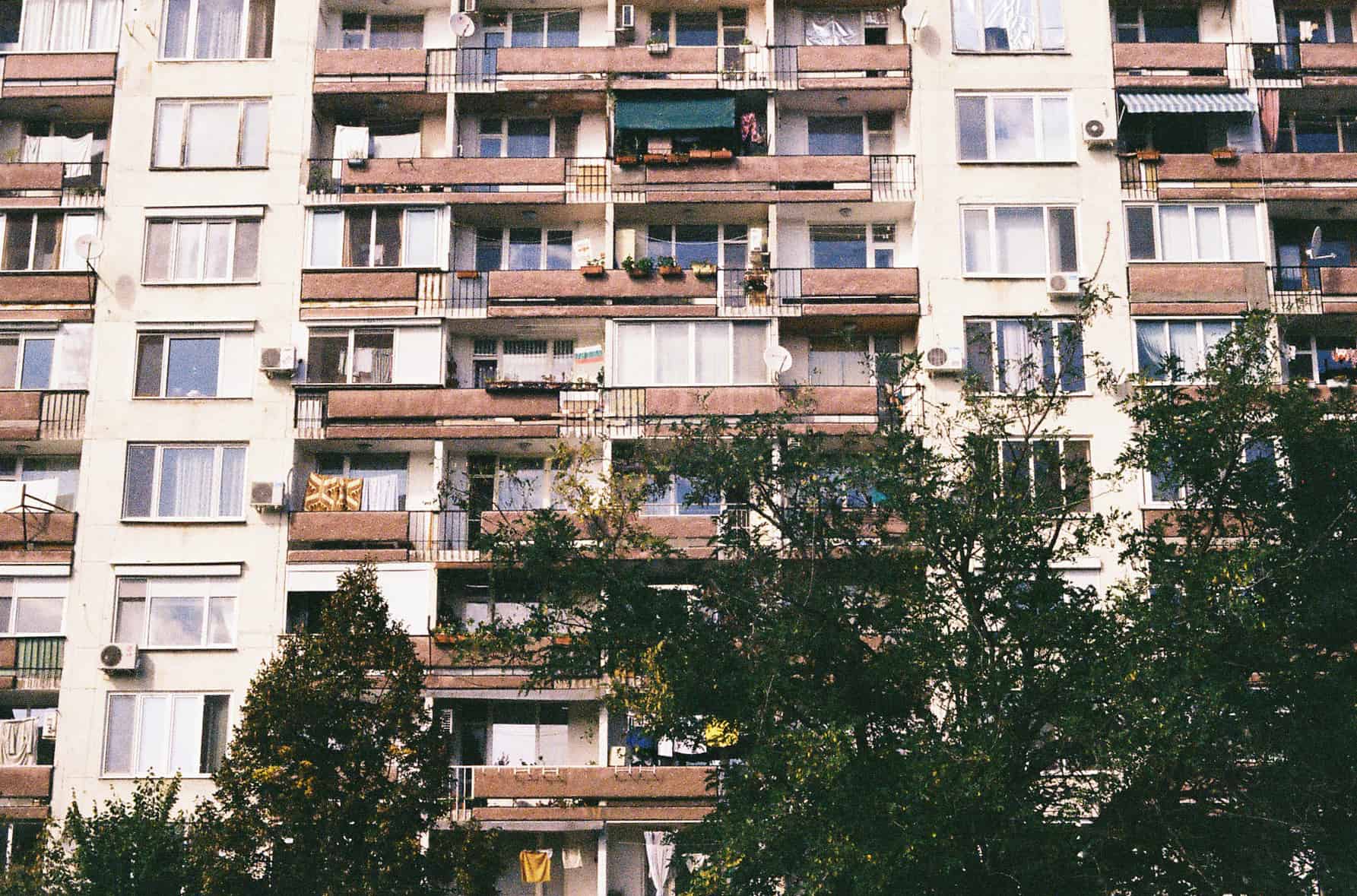
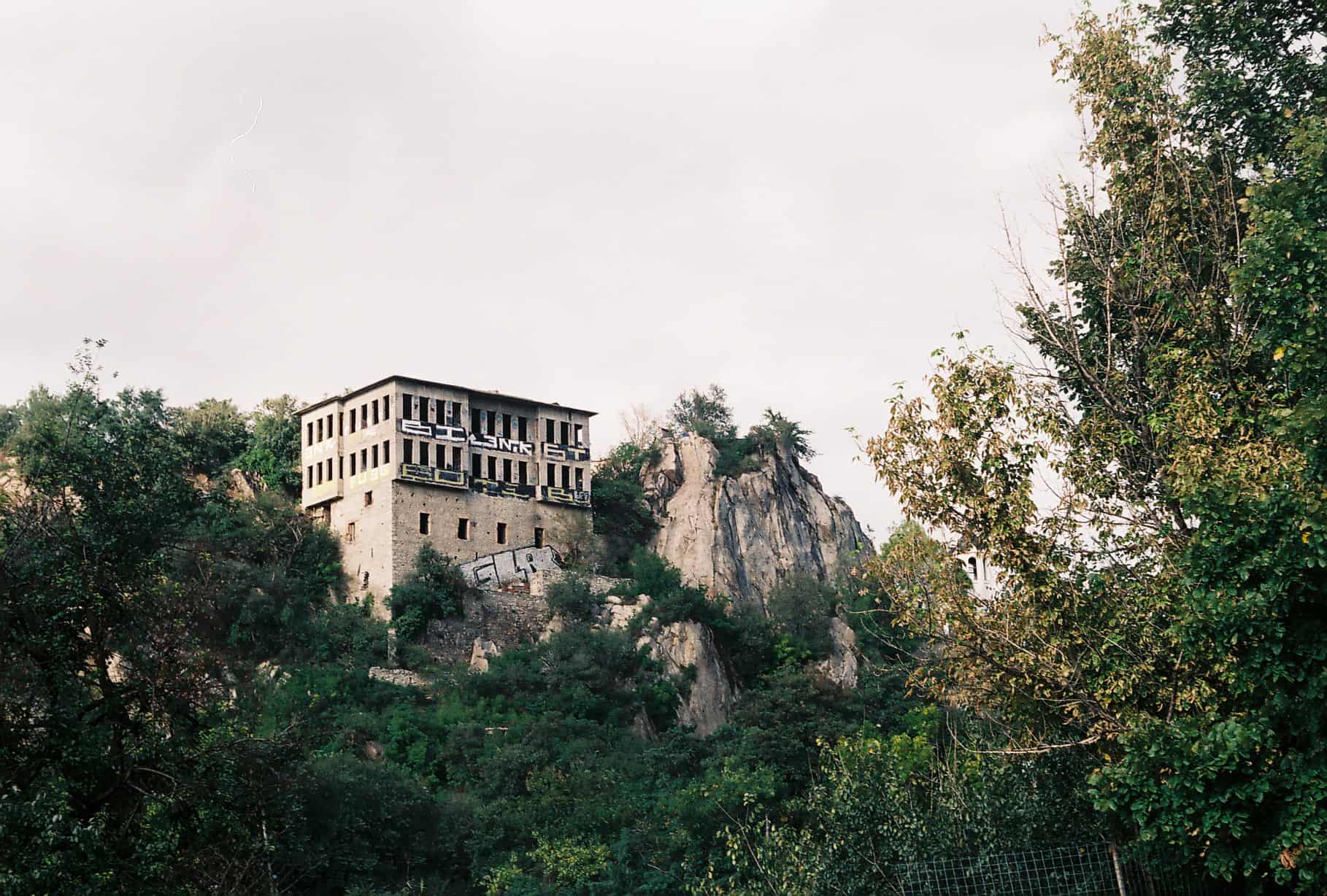
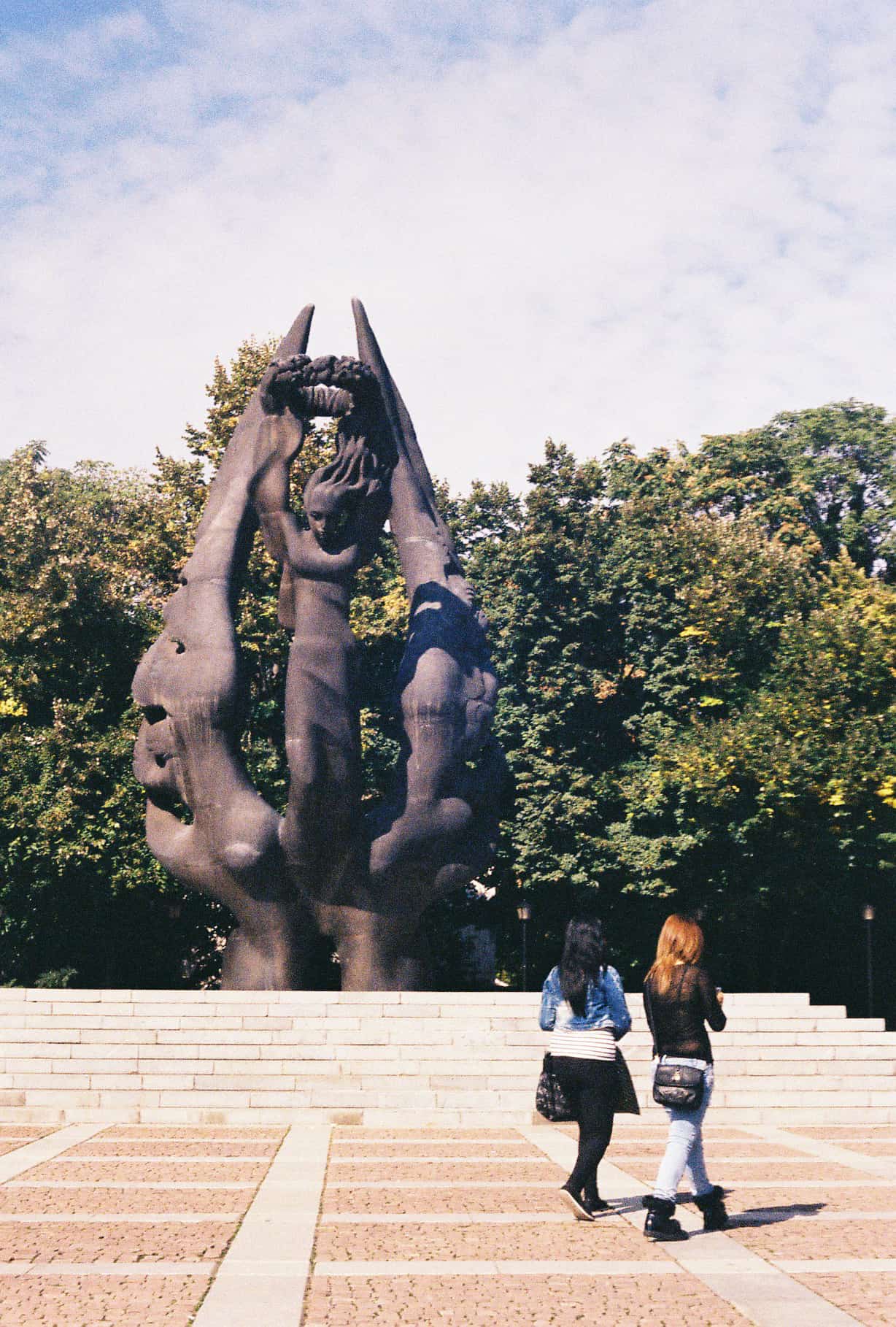
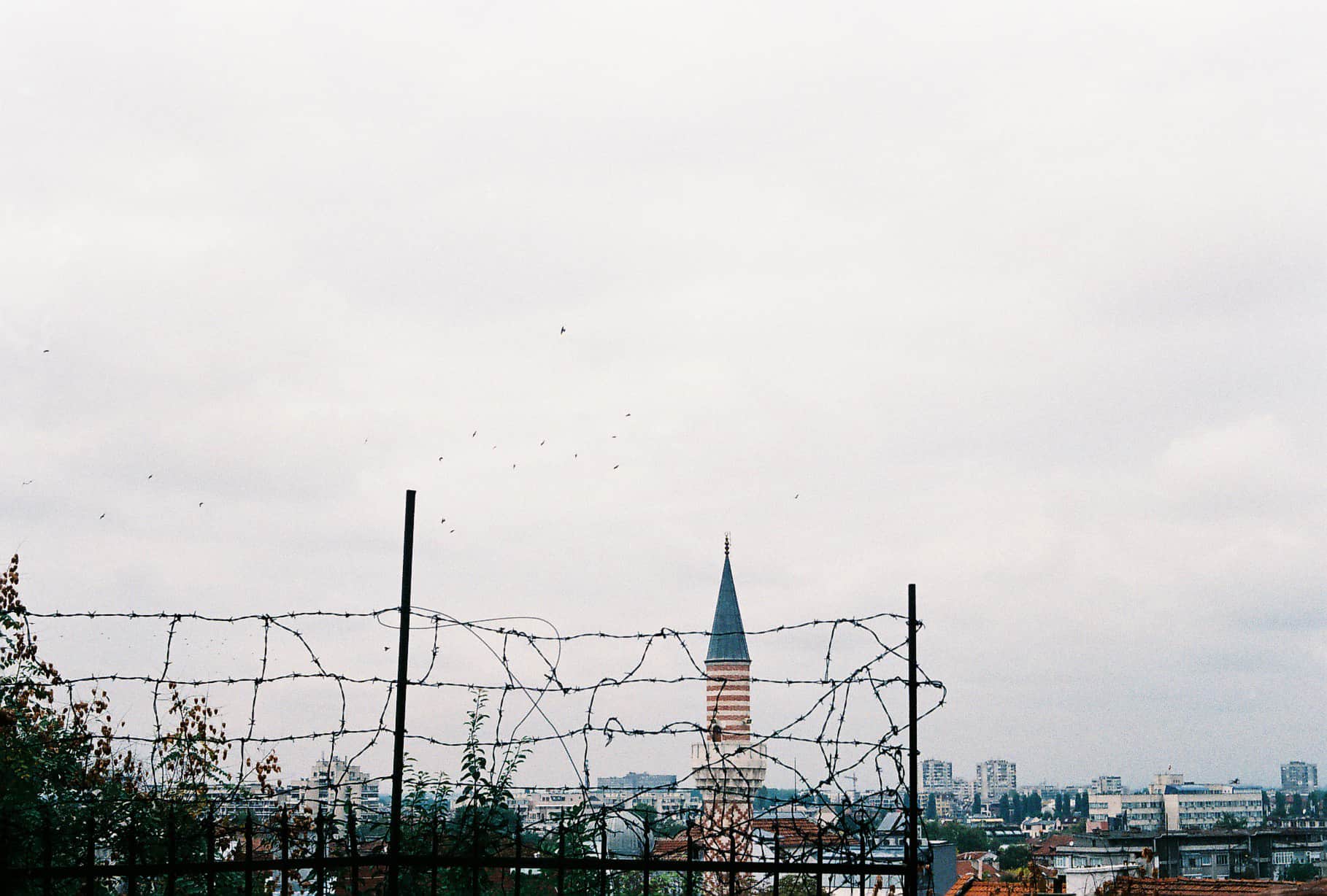
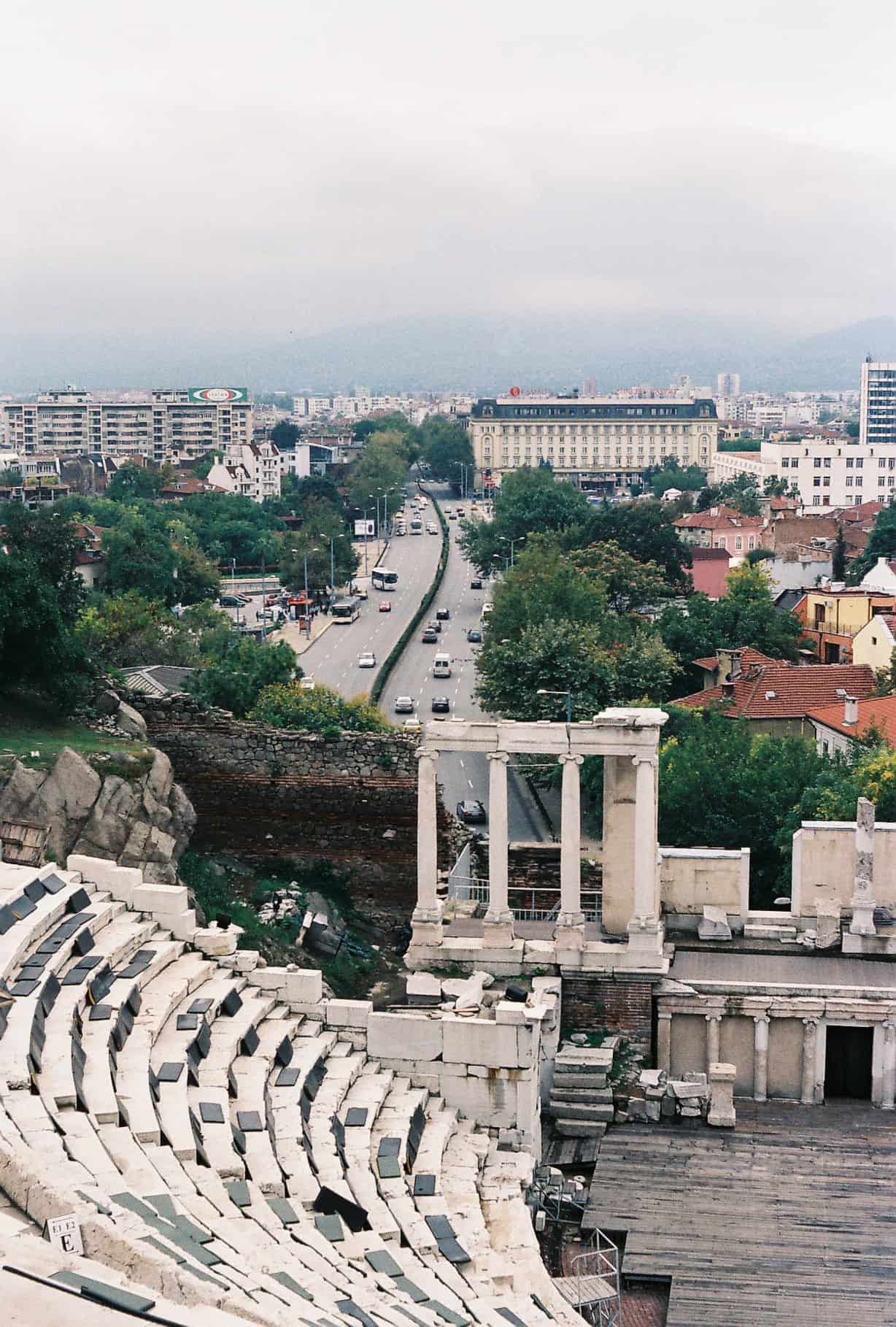
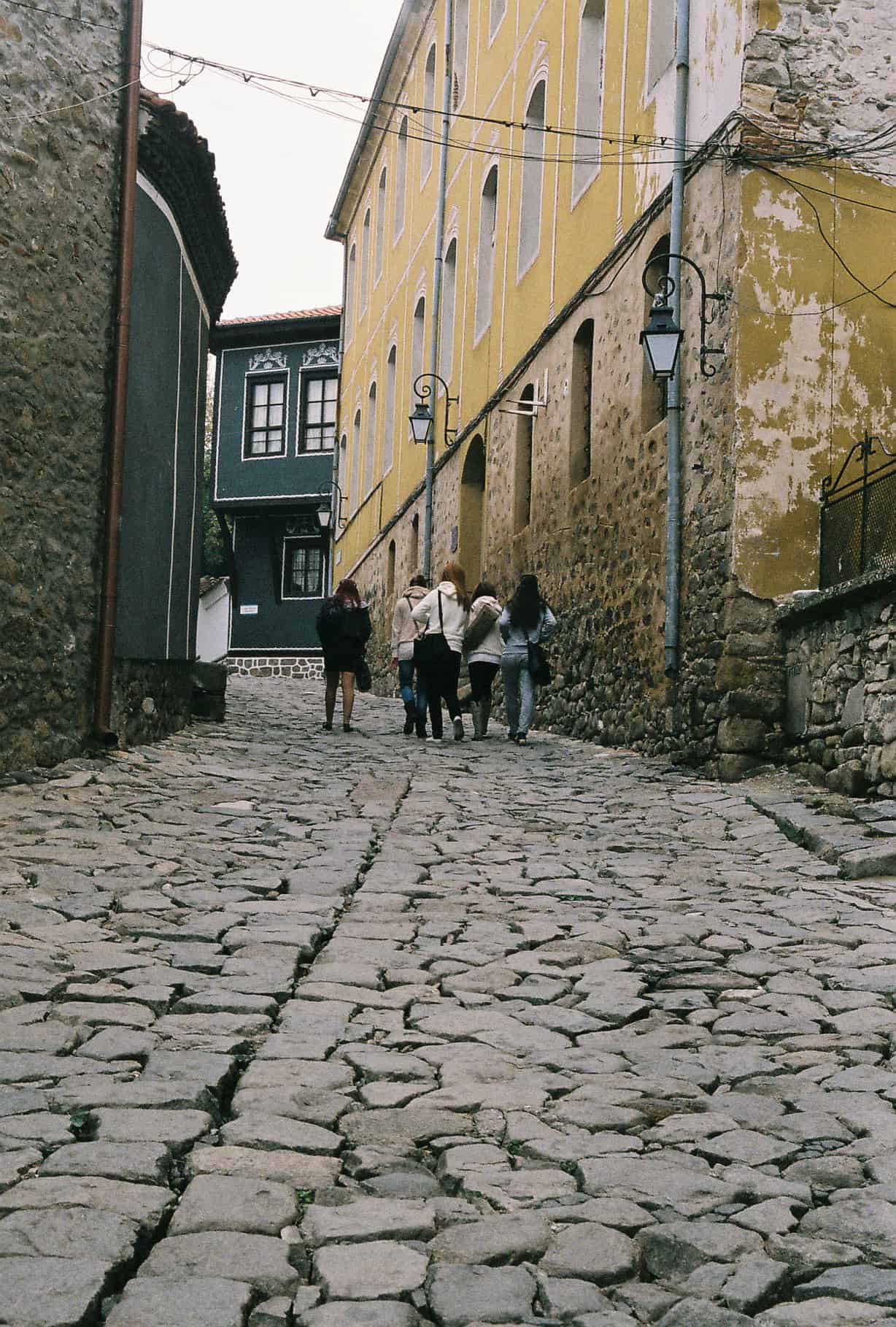
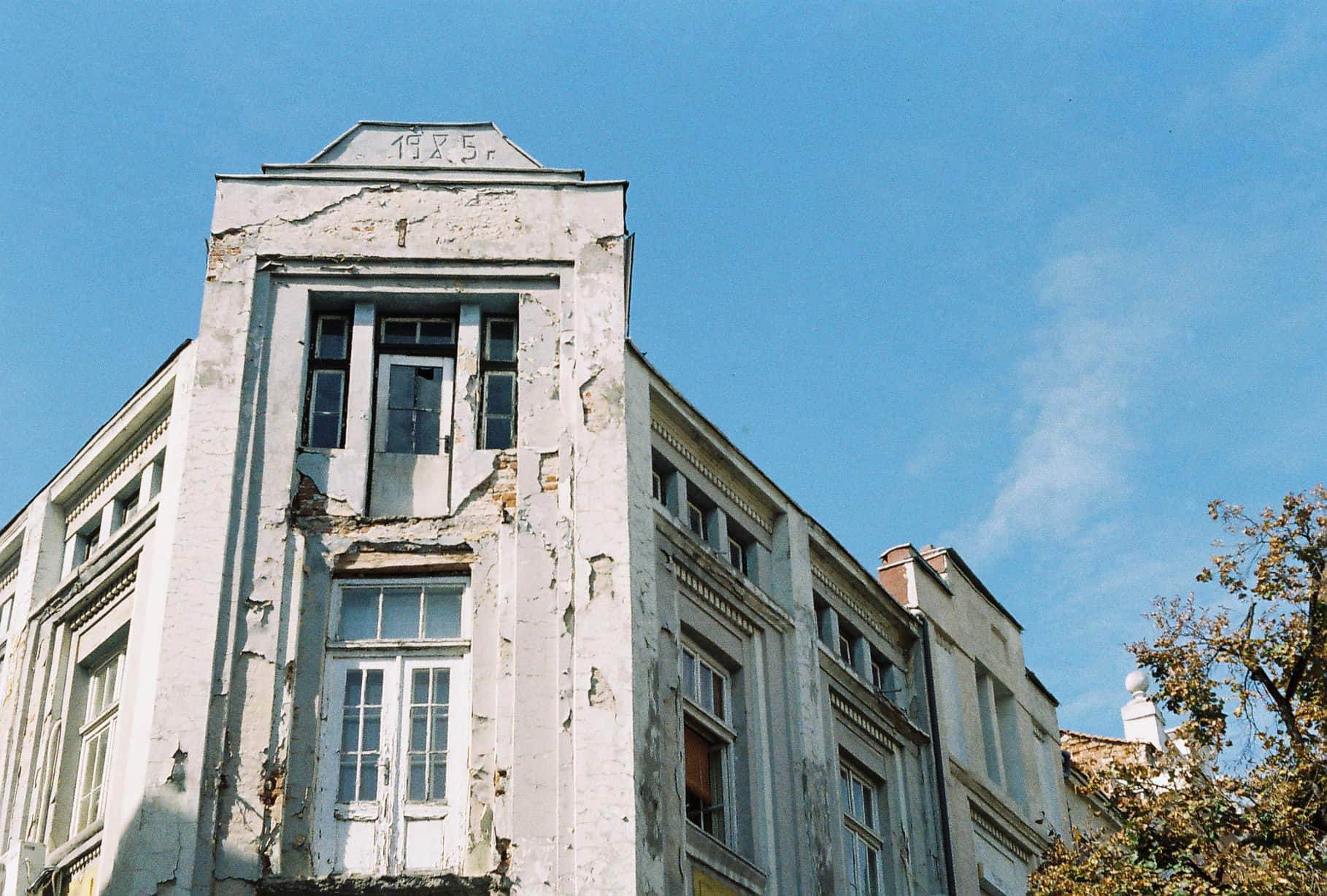

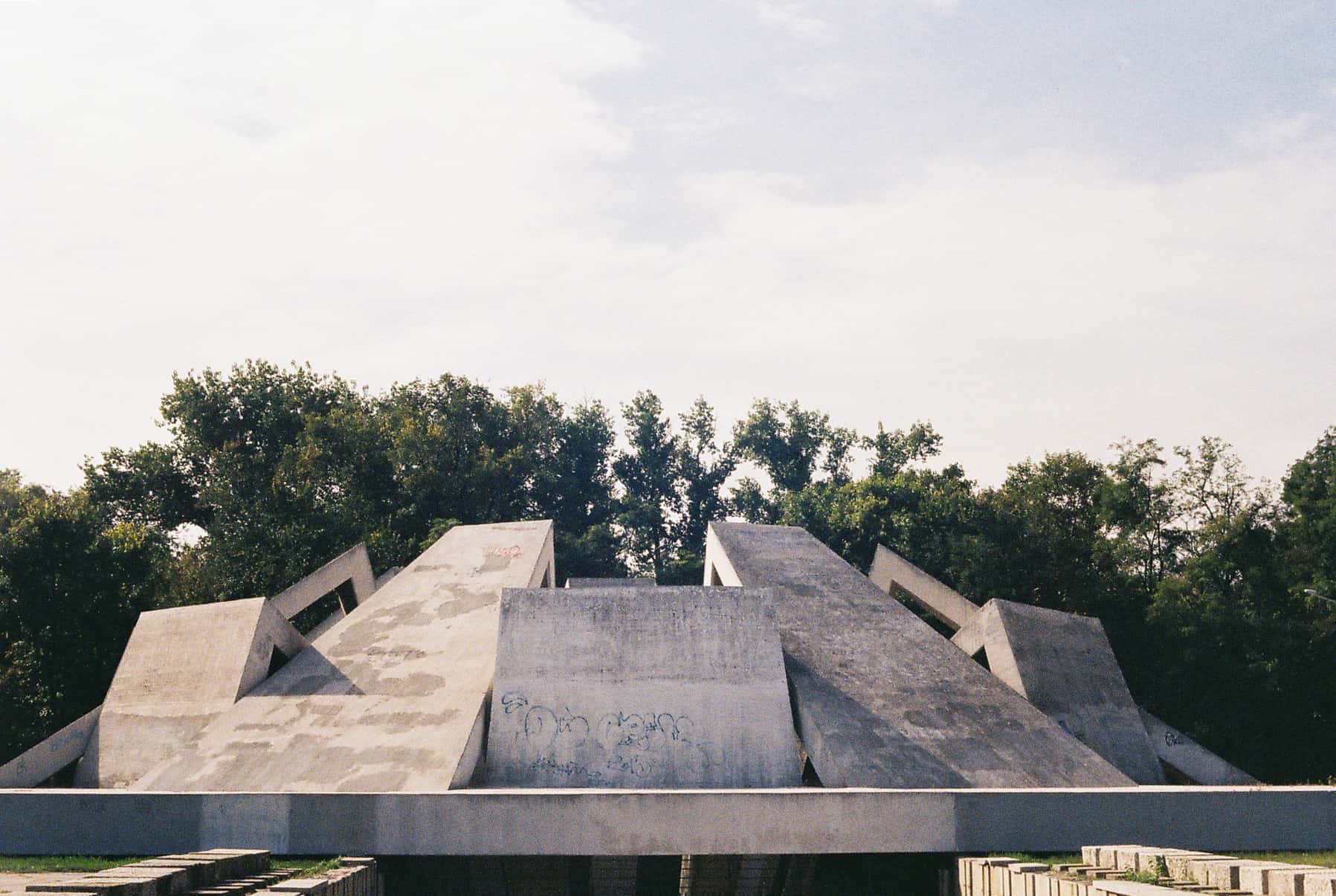

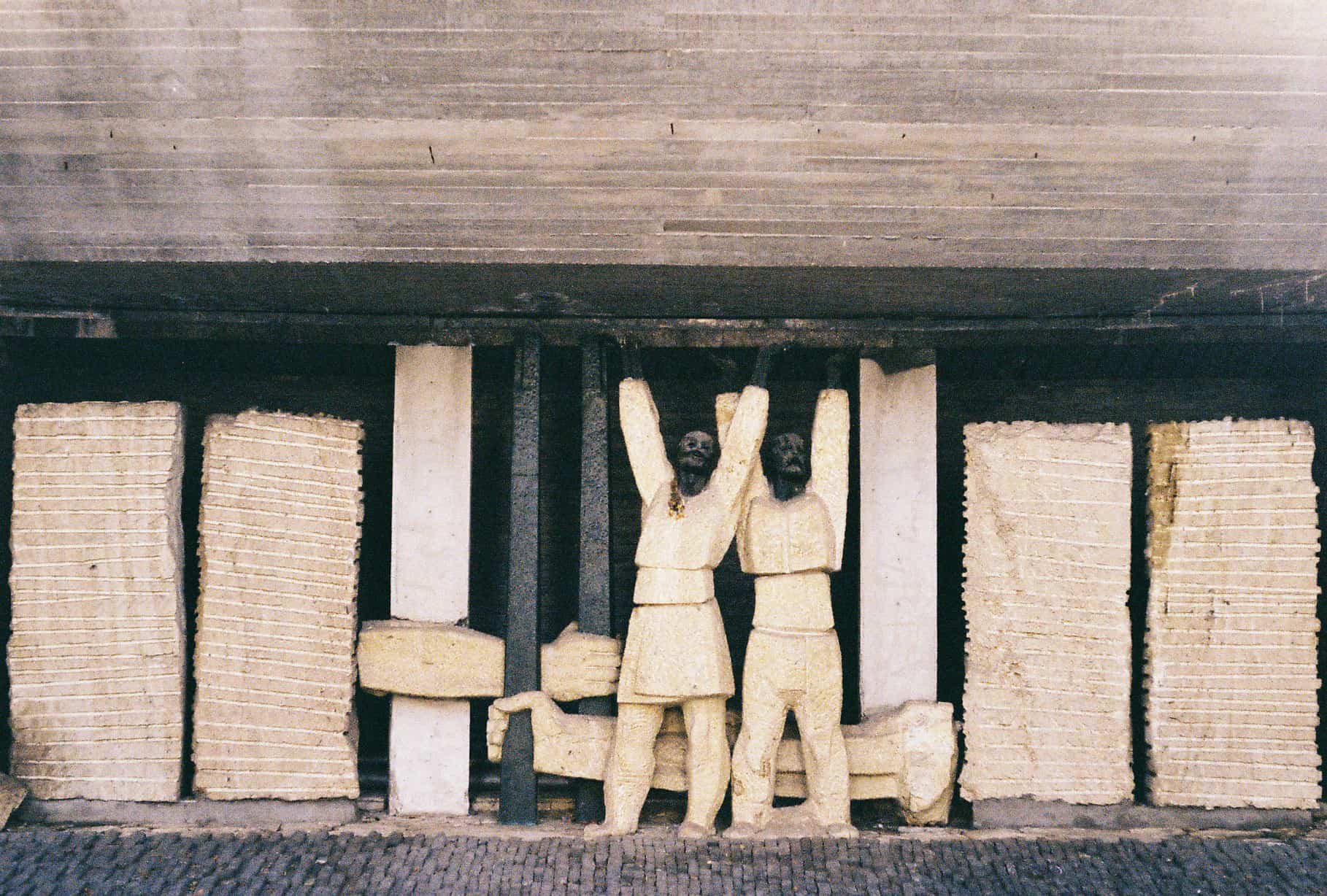
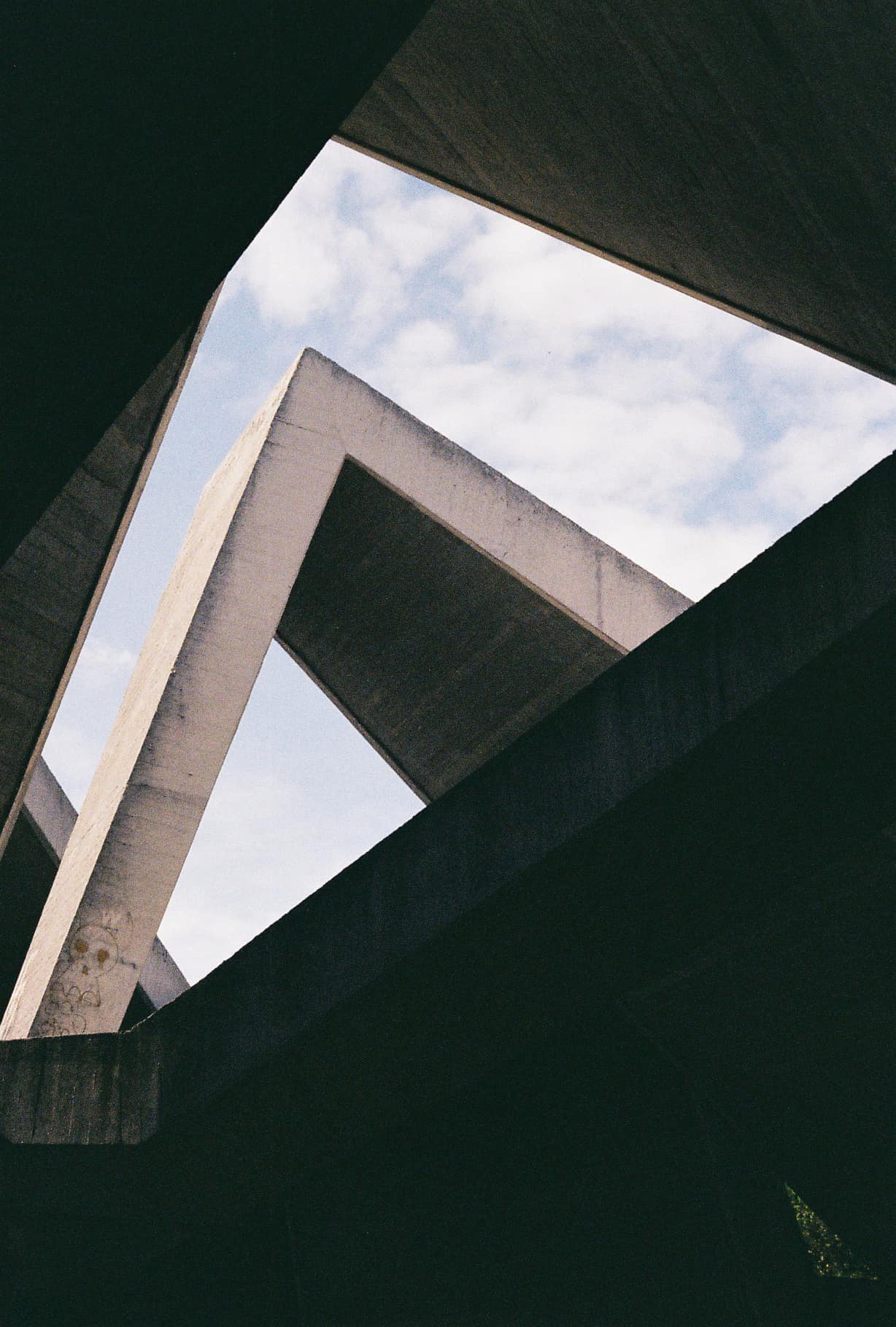
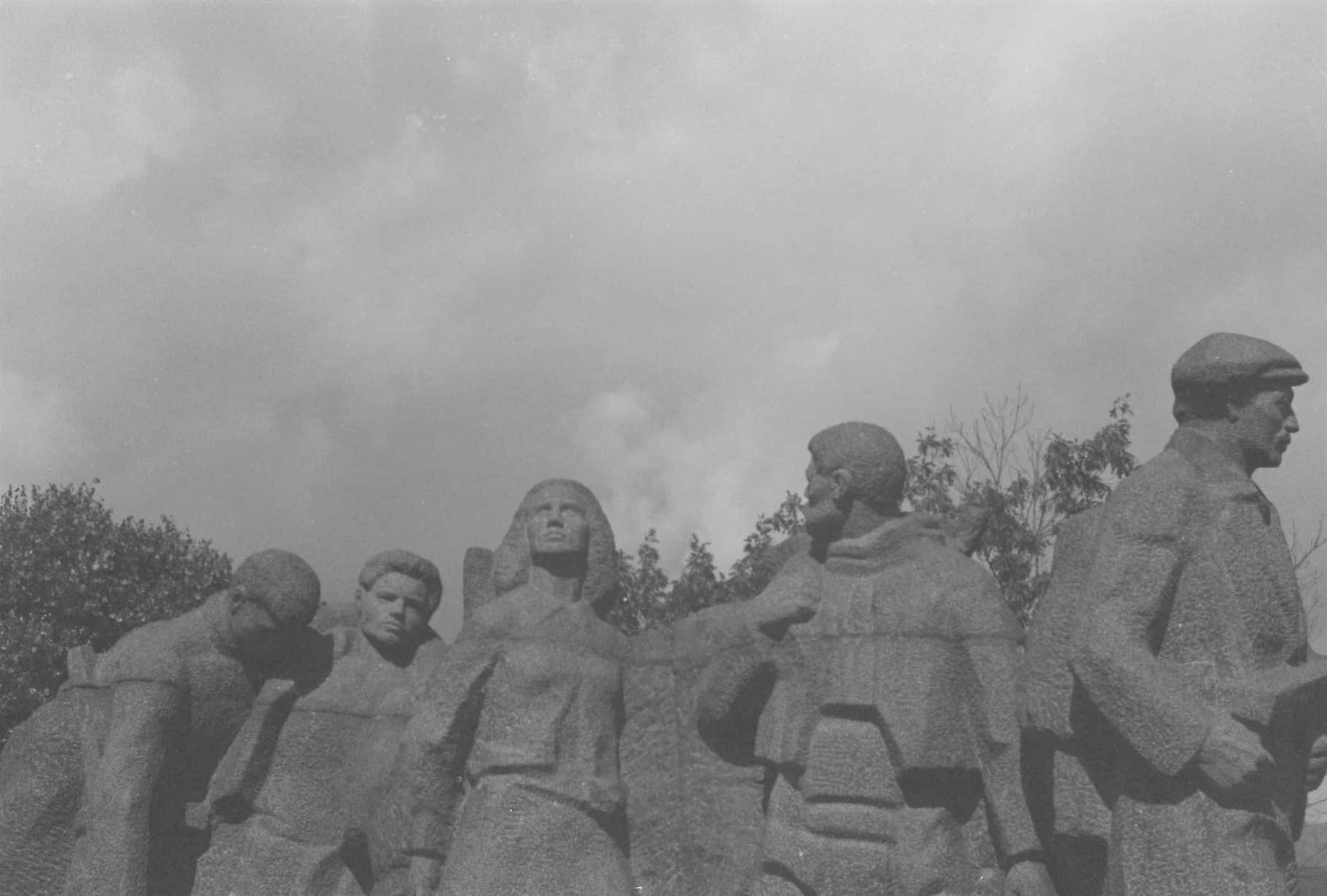
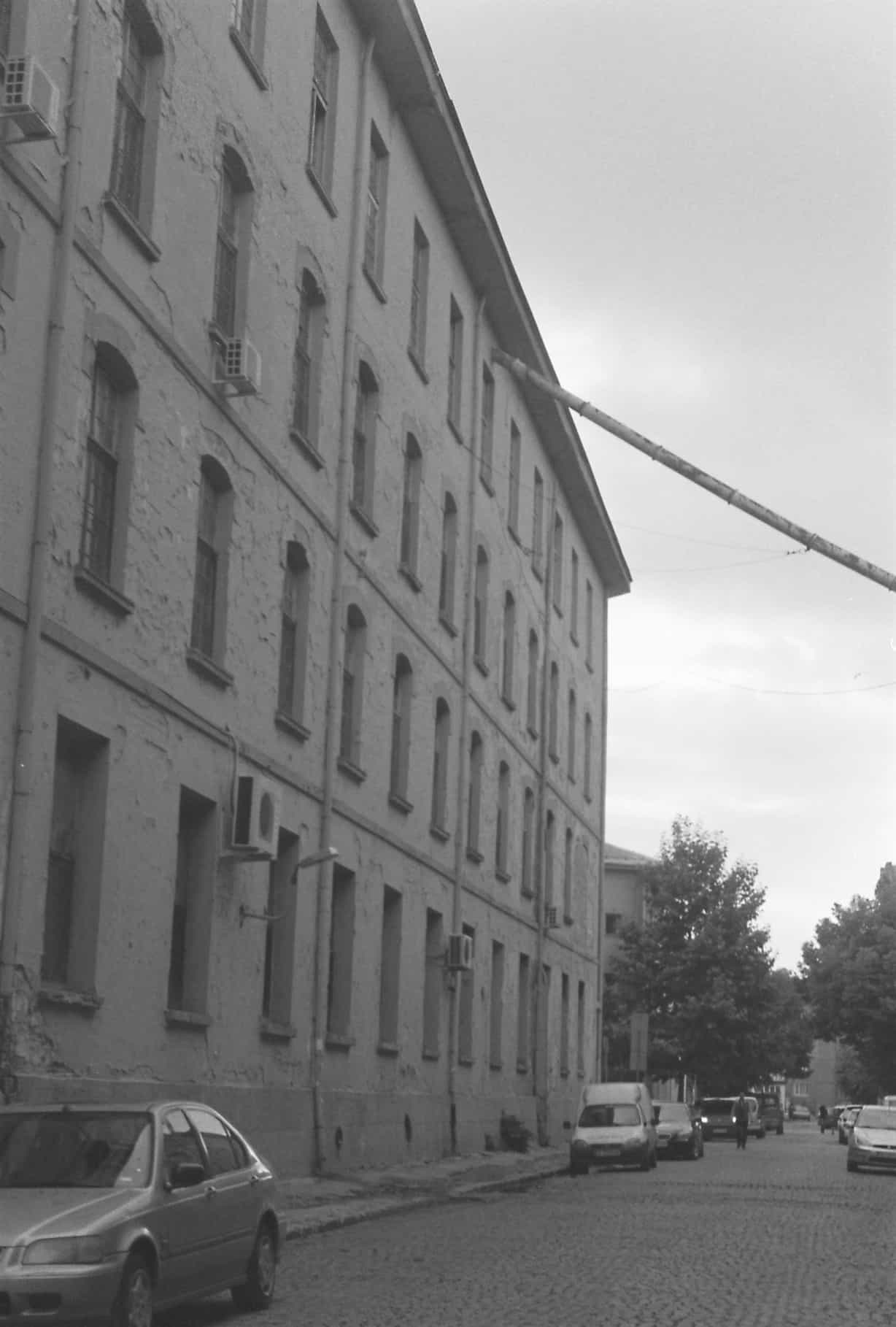
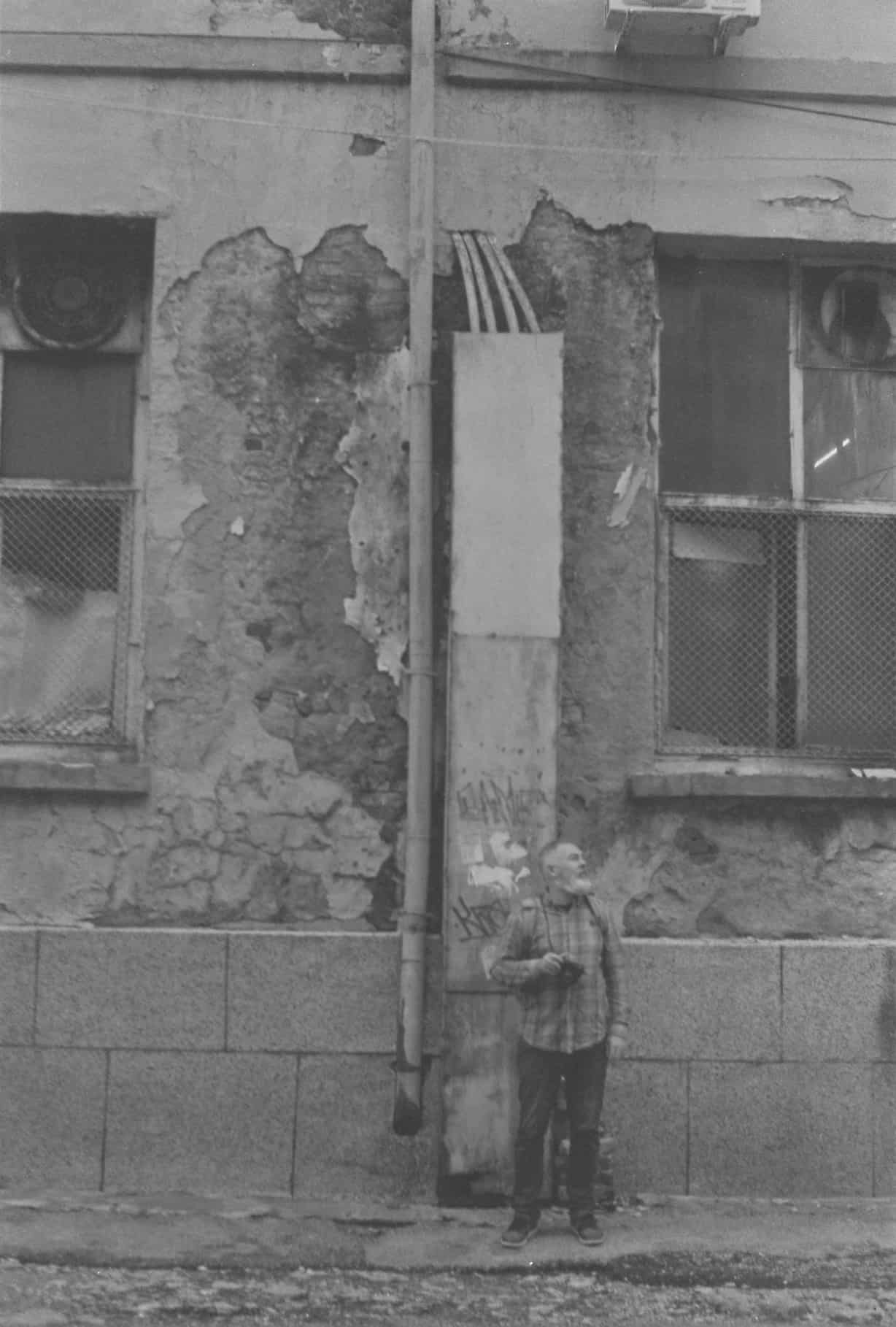
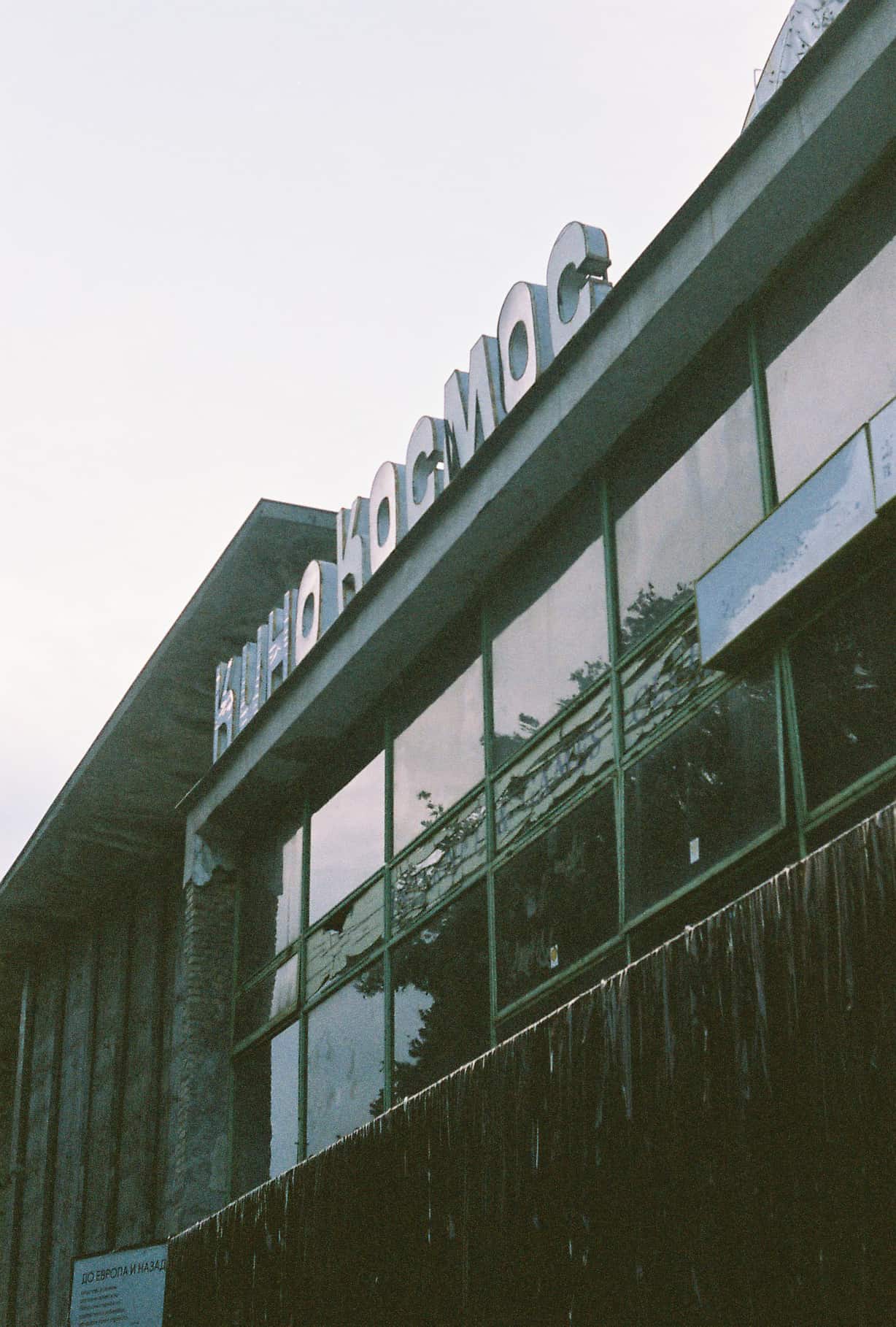
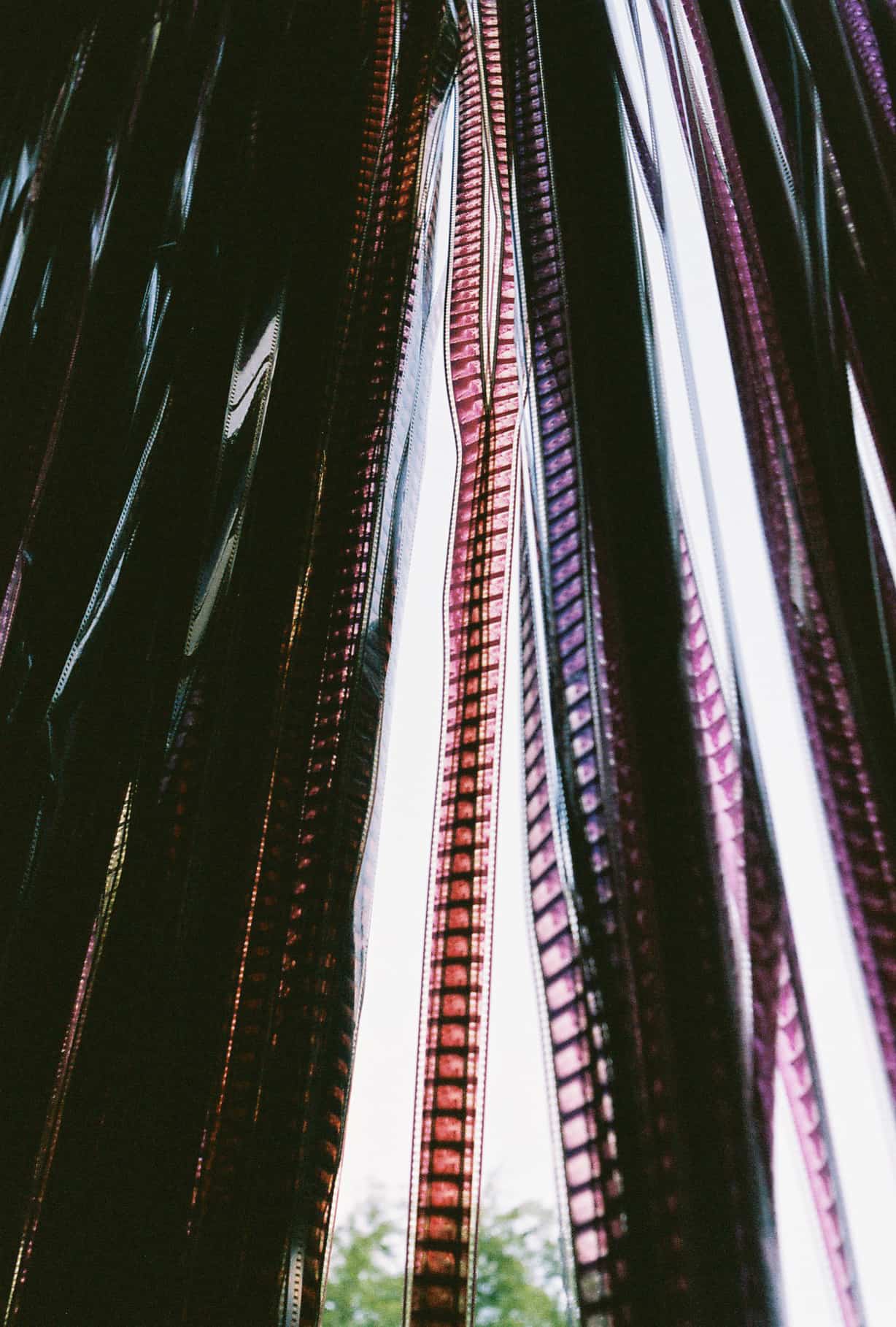
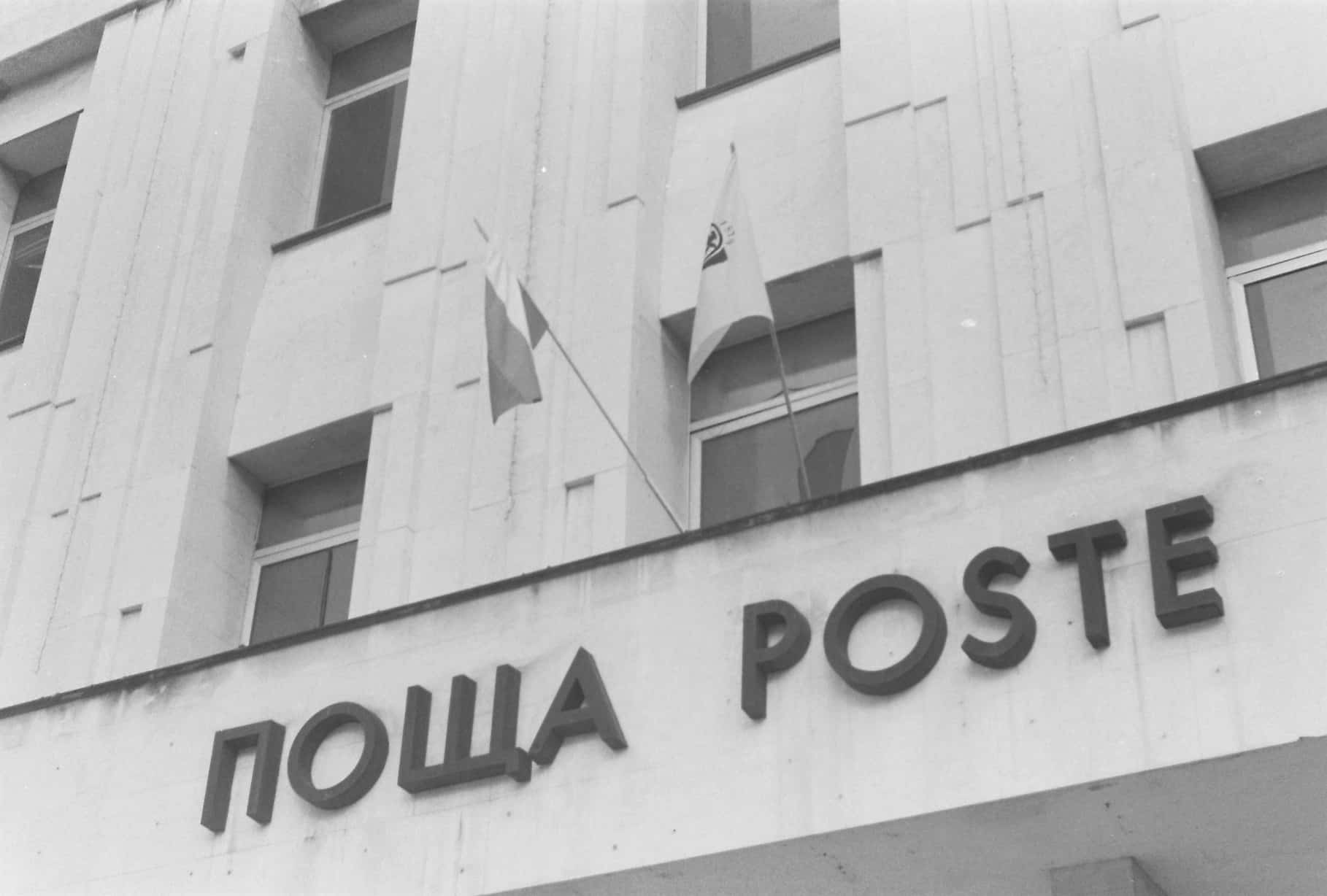


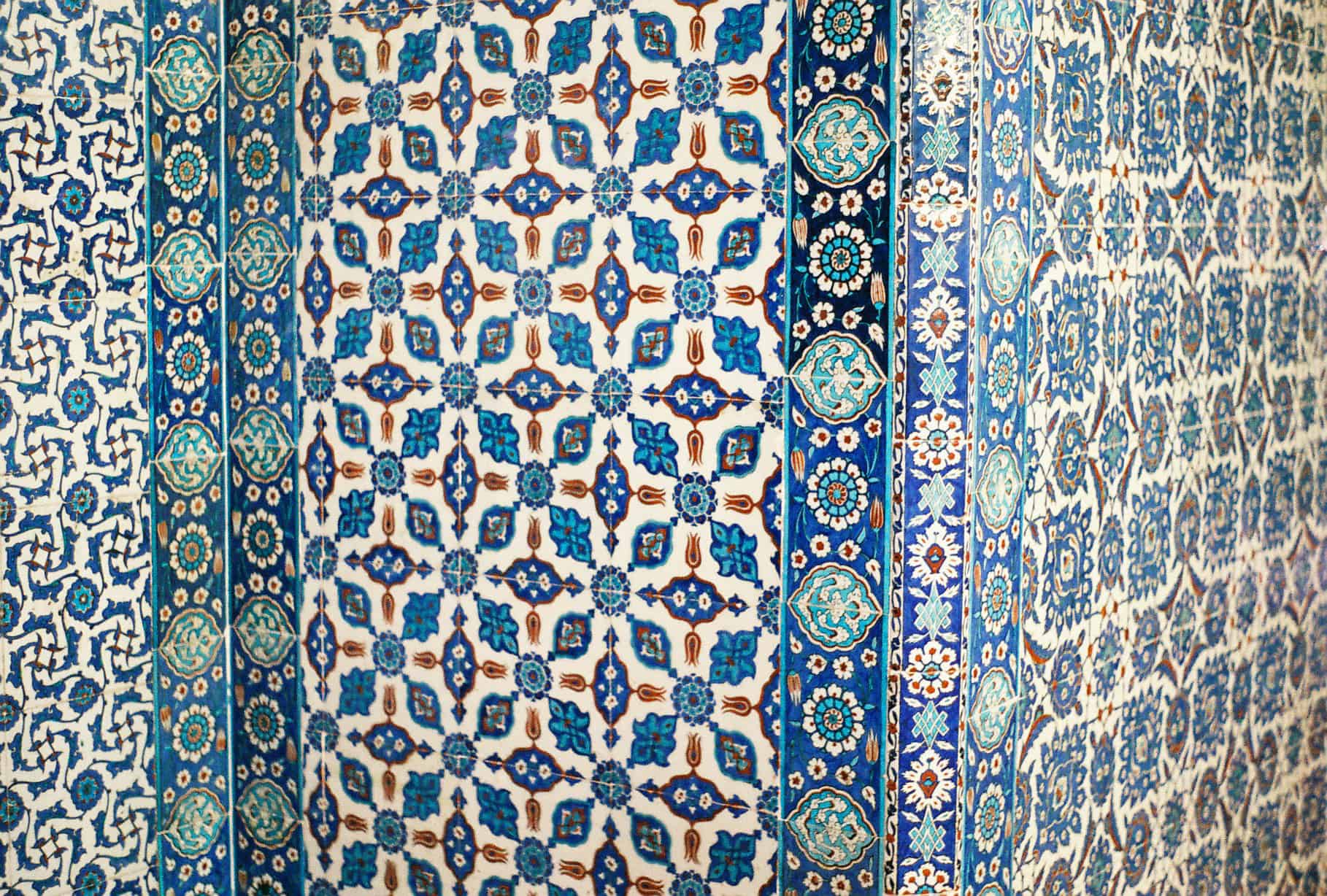
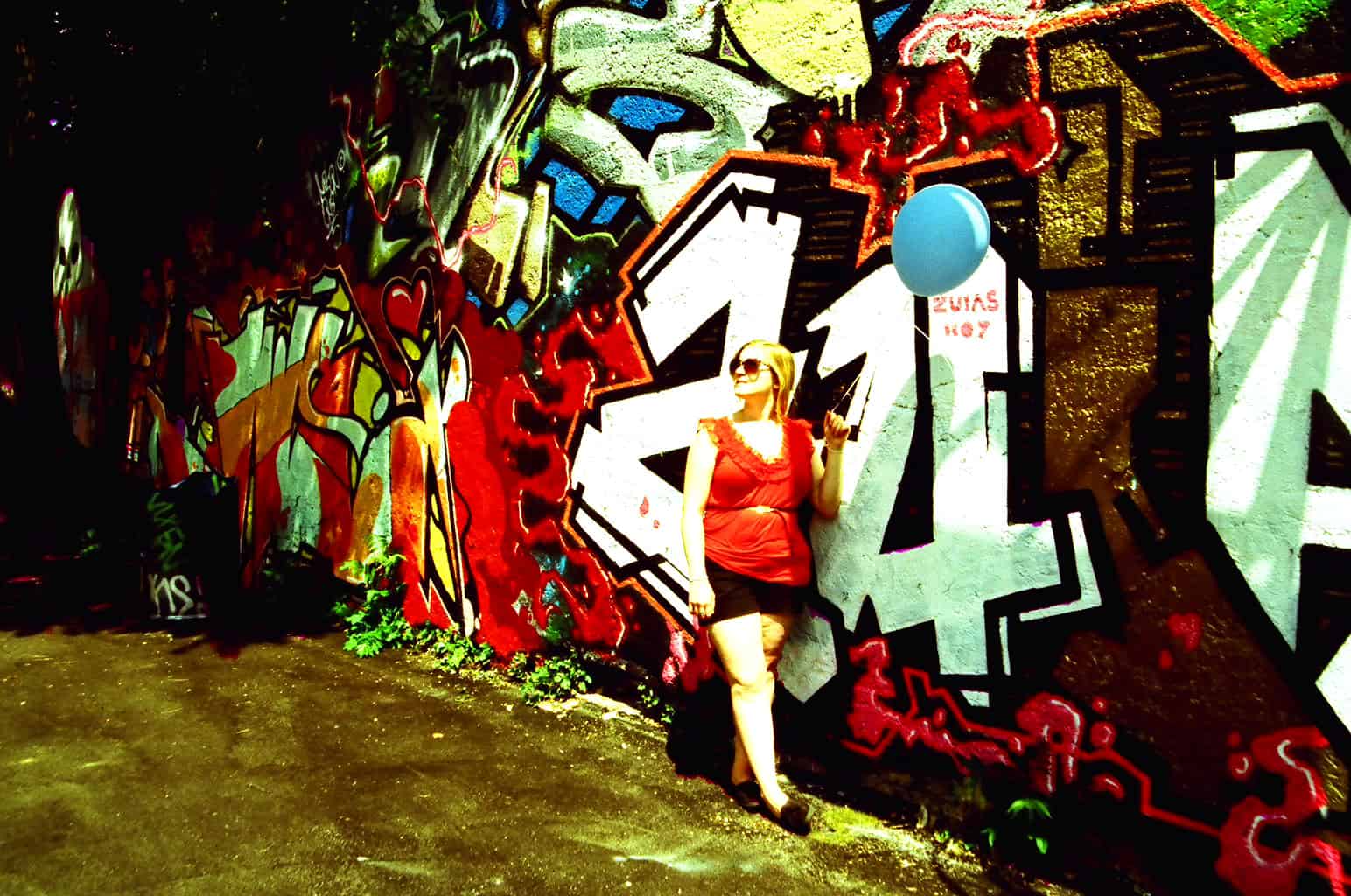
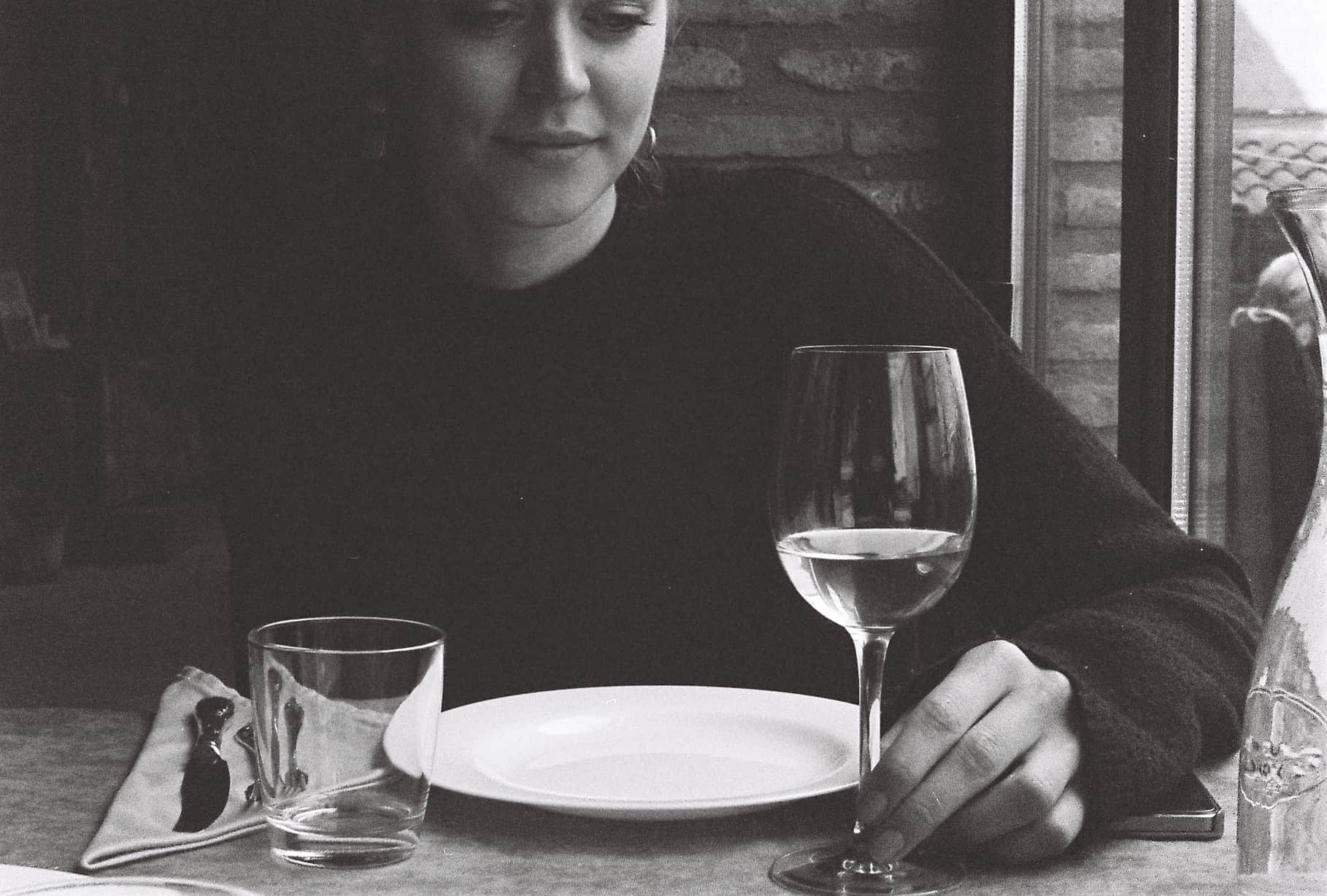
2 Comments
Ilene Lerner
November 9, 2015 at 2:11 PMKatie,
It was exciting to read your blog about Bulgaria!
Have you visited the art and history museums in Sofia? I really recommend that!!
I loved the photo of the Roman colleseum in Plovdid!!
The history of various eras surrounds one walking the streets in Bularia. So much older than the architecture of the U.S!
Ilene
Katrinka
November 16, 2015 at 11:57 PMThank you Ilene! I went to Sofia seven years ago and didn’t really know what I was doing there, though I do remember going to the archaeological museum. I think I’ll have to go back sometime!